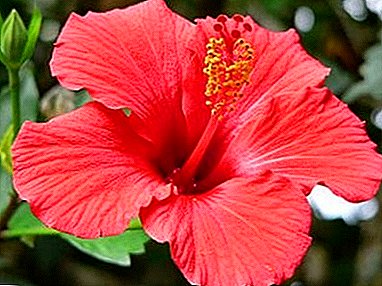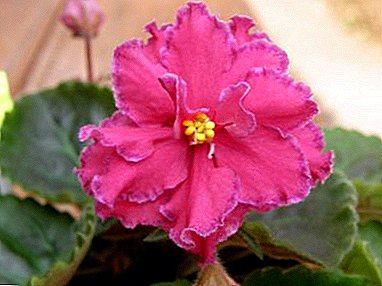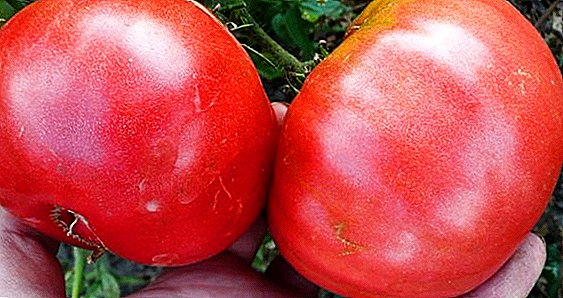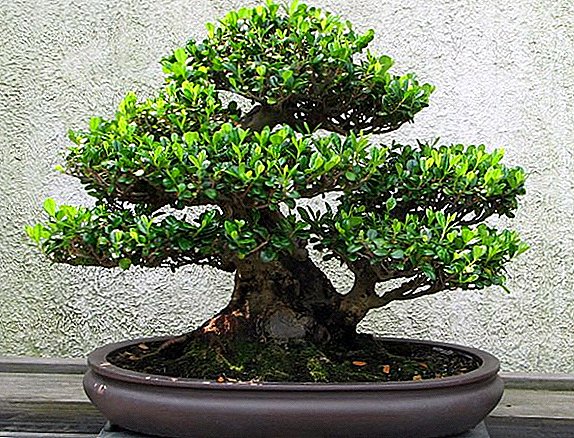 Ficus belong to the most popular home plants. Known more than 1000 types of them and it is curious that only some of them are grown in room conditions, the names of which we will describe later. The popularity of these plants is due to their incredible beauty, as well as ease of care for them. The only caveat that should be considered in advance is that evergreens grow very large and reach impressive sizes.
Ficus belong to the most popular home plants. Known more than 1000 types of them and it is curious that only some of them are grown in room conditions, the names of which we will describe later. The popularity of these plants is due to their incredible beauty, as well as ease of care for them. The only caveat that should be considered in advance is that evergreens grow very large and reach impressive sizes.
Therefore, if it is intended to plant a flower in a room with limited space, you should immediately pay attention to rubber plants, in the description of which compact dimensions are indicated, to study in more detail the types and their names.
Benjamina
Under natural conditions, these rubber plants are distinguished by their power and large size, because reach a height of 15-20 m. At home, the plant, of course, does not grow so tall, but still represents a rather small tree than a bush. The height of the trunk of such a pet can reach 3 m. A distinctive feature of Benjamin's ficus are motley leaves. The bark is colored light gray. The crown is sprawling and well branched. This evergreen representative come from the tropics, therefore requires special care in the indoor environment and is considered quite capricious.
If you want your tree to always grow healthy, read how to properly care for Benjamin ficus at home.

Important! Ficus benjamin does not like open sunshine. The light in the room where it is grown should be diffused.
Its irrigation should also be approached with caution: he loves humid air, but does not tolerate overmoistened soil. Watering the tree as the top layer of soil dries and is very moderate, but regular spraying, especially in hot weather, is recommended as often as possible.
Find out what causes poor growth Ficus Benjamin.
Rubber mower
The most popular species that is grown at home. Rubber plant reaches a height of 2-2.5 m, and with proper care can grow up to 3 m. It is noteworthy that the plant can be cut off, if in the room where it is grown, there are no conditions for such a tall flower.
Familiarize yourself with all the subtleties of the formation of the crown rubber rubber plant.

Important! The stems and foliage of the plant contain lacteal juice, from which rubber was previously extracted, therefore, taking care of a houseplant, care should be taken, as the substance can cause an allergic reaction or even a burn if it gets on the skin.This species is characterized by large elliptical leaves, dark green in color with light divorces. For flowers to appear on the ficus, pollinators are needed; at home it is not possible to ensure the presence of these insects, so the plant, as a rule, does not bloom. But do not be upset about this, as the flowers of this species are absolutely not decorative and pale in the background of its beautiful leaves. The rubber plant is absolutely not whimsical in care, so even a novice grower can grow it. All he needs to provide is sunny place and regular watering.
Find out what are the main diseases of the rubber-plant ficus and what to do if the ficus is sick.
Dwarf (tiny)
 The smallest representative of ficuses. An evergreen herbaceous shrub can be grown as an ampelous plant, or on a support. Curly shoots cover small leaves. Young leaves reach 3-5 cm in length, and their width is 2-2.5 cm. Adult leaves are much larger, 7-10 cm in length; they are much tougher, and the streaks on the plate are more pronounced. For planting such a plant is ideally suited a slightly shaded place with a large amount of ambient light. Dwarf ficus does not tolerate drought, so it is important to provide him with regular abundant watering, as well as daily spraying, to increase the humidity of the air.
The smallest representative of ficuses. An evergreen herbaceous shrub can be grown as an ampelous plant, or on a support. Curly shoots cover small leaves. Young leaves reach 3-5 cm in length, and their width is 2-2.5 cm. Adult leaves are much larger, 7-10 cm in length; they are much tougher, and the streaks on the plate are more pronounced. For planting such a plant is ideally suited a slightly shaded place with a large amount of ambient light. Dwarf ficus does not tolerate drought, so it is important to provide him with regular abundant watering, as well as daily spraying, to increase the humidity of the air.
Lyrate
Africa is considered the birthplace of ficus lyrate. The flower got its name for the unusual shape of a leaf plate, which resembles a musical instrument - lyre. In room conditions it is capable of reaching a height of 1.5-2 m. It is recommended to plant an evergreen away from open sunlight, but it is important to provide a large amount of light to it. Watering should be abundant and timely. At the same time, care must be taken to ensure that the soil in the pot is not too moist. To make this ficus feel comfortable, the temperature in the room should not fall below 20 ° C; it is also very important that there are no drafts. 
Did you know? In the tropical forests of Africa from the air roots of huge ficuses build bridges. Such a material is considered the most durable, and even in conditions of incredible humidity it can last up to 500 years.
Rusty Leaf (Rubiginosa)
A small tree with reddish shoots and dark green large leaves. Bottom sheet plate painted in red color. Ficus has large fluffy buds up to 5 cm. Numerous aerial roots form at the bottom of the crown. For irrigation it is necessary to use only warm water, and to carry it out only when the top layer of the soil is completely dry. From excessive watering ficus can get sick. Young trees are transplanted every year in a larger pot; as for adult representatives, it is enough to refresh the top layer of the substrate. 
Ficus karika (fig room)
A distinctive feature of the species is that this plant fruit and deciduous. In room conditions can grow in height up to 2 m. The tree is covered with large green leaves. The lower part of the leaf plate is slightly lighter and rough to the touch. Ficus carica refer to dioecious plants, and if you grow female trees in indoor conditions, you can get a good harvest of figs. It is possible to form bonsai from indoor figs - one cannot say that it is too simple, but the result will certainly please you.
Did you know? Ficus are widely used in traditional medicine. The leaves and juice of them are used to treat colds, hemorrhoids, mastopathy, disorders of the gastrointestinal tract, warts, corns and hematomas.

Bengal
Very decorative and completely capricious in the care of the plant. In Bengal ficus large smooth leaves of bright green color, and in height it reaches 2-3 m. In no case you cannot plant this species in the open sun, as on tender leaves burns may occur. Water the indoor flower regularly and moderately. Foliage is recommended to wipe off dust with a soft, damp cloth. Do not allow stagnation of water in the pot and pan, as this can lead to fungal diseases. The crown of this tree can be trimmed, giving a decorative shape; also pruning helps keep the growth of the tree in case of such need. 
Binnandik (Ali)
At home, these evergreen trees grow to 1.5-2 m in height. The bark of young representatives of the species has a brown color, which becomes gray with age and white strokes appear on it. The leaf cover is a bit like a willow, the leaves are just as narrow and long. In order for this plant to grow and develop well, it is necessary to ensure large amount of light and in the winter, extra lighting in the form of a fluorescent lamp will not be superfluous. The leaves of this ficus are very delicate and easily broken, so it is recommended to plant it in a spacious room. Due to the fact that the trunk of the tree is very thin, it is better to provide support. It is very simple to propagate this ficus, it can be done both with the help of cuttings, and with the help of layering.
In addition to the ficus Binnandyk (Ali), the light-loving indoor plants are also: alokaziya, anthurium, araucaria, begonia, hippeastrum, gloxinia, dendrobium, dracaena, kalanchoe and calatea.

Sacred
The species has several names - "Sacred" or "Religious" ficus, "Sacred Fig". Such a topic name is primarily associated with the fact that the tree very much respected in buddhism around the temples this plant is planted, and for holidays it is decorated with branches with ribbons. The Sacred Figi has a powerful stem and strong branches covered with light gray bark. The length of the heart-shaped leaves is 8-12 cm. The plant is considered unpretentious and it can be grown by everyone on their windowsill.
When planting, it is necessary to give preference to the western and eastern windows - in this way it will be possible to provide optimal lighting. Watering should be carried out only when the top layer of soil in the pot dries. Humidity is also important because if the air is too dry, the flower may begin to shed its leaves. 
Check out also the secrets of successful cultivation of ficus microcarp.These are the most popular types of ficus, which suitable for growing indoors. All of them are united by ease of care and high decorative qualities. Depending on the taste preferences, everyone can pick up the ficus, which will appeal. Observing the simple rules, which most often consist of regular watering and humidification of air, you can grow a beautiful tree at home or in the office, and it will long delight with its beauty.












